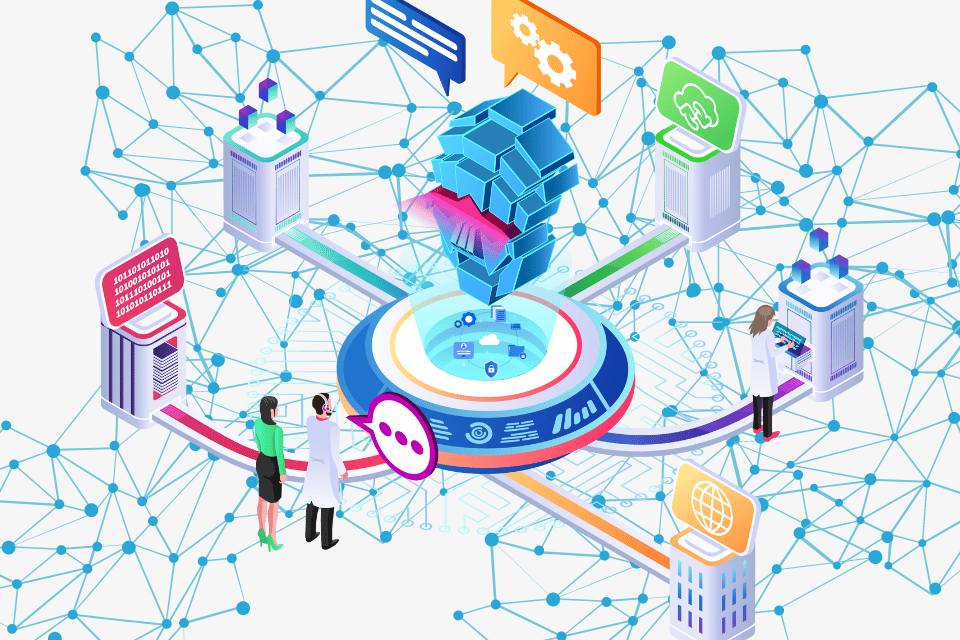Hyper Personalization: The Future of Customer Engagement in the Digital Era

Businesses now, are constantly seeking innovative ways to stand out and capture customer attention. Enter hyper personalization - a game-changing approach that's revolutionizing customer engagement and driving unprecedented levels of loyalty and conversion. This advanced strategy goes beyond traditional personalization methods, leveraging big data, artificial intelligence (AI), and machine learning to deliver highly tailored experiences to individual customers.
What is Hyper Personalization
Hyper personalization represents the pinnacle of personalized marketing, taking customization to new heights by utilizing real-time data and AI to deliver highly relevant content, product recommendations, and offers to each customer. Unlike basic personalization that might use simple demographics or broad segmentation, hyper personalization considers a vast array of data points, including:
- Behavioral data
- Transactional history
- Real-time contextual information
- Device usage patterns
- Social media activity
- Location data
- Personal preferences and interests
By synthesizing these diverse data streams, hyper personalization creates a comprehensive, 360-degree view of each customer, enabling businesses to craft uniquely tailored experiences that resonate on a deeply individual level.
The Role of AI and Machine Learning in Hyper Personalization
At the heart of hyper personalization lies the power of AI and machine learning. These technologies enable businesses to:
- Process and analyze vast amounts of data in real-time
- Identify complex patterns and correlations in customer behavior
- Predict future customer needs and preferences
- Automate the delivery of personalized content and offers
- Continuously learn and refine personalization strategies
Through AI-driven hyper personalization, businesses can create dynamic, adaptive customer experiences that evolve with each interaction, fostering deeper engagement and loyalty.
Hyper Personalization Across the Customer Journey
Implementing hyper personalization throughout the customer journey can significantly enhance the overall customer experience:
- Awareness: Deliver targeted ads and content based on individual interests and browsing history.
- Consideration: Offer personalized product recommendations and tailored landing pages.
- Purchase: Provide customized pricing, bundles, or promotions based on individual preferences and history.
- Retention: Send personalized follow-ups, loyalty rewards, and exclusive offers to encourage repeat business.
- Advocacy: Engage customers with personalized referral programs and community-building initiatives.
Benefits of Hyper Personalization
The implementation of hyper personalization strategies can yield numerous benefits for businesses:
- Increased customer engagement and satisfaction
- Higher conversion rates and average order values
- Improved customer retention and lifetime value
- Enhanced brand loyalty and advocacy
- More efficient marketing spend and higher ROI
- Competitive differentiation in crowded markets
Challenges and Considerations
While the potential of hyper personalization is immense, it's not without challenges:
- Data privacy and security: Ensuring compliance with regulations like GDPR and CCPA is crucial.
- Data quality and integration: Maintaining accurate, up-to-date data across multiple sources can be complex.
- Technology infrastructure: Implementing the necessary AI and machine learning capabilities requires significant investment.
- Ethical considerations: Balancing personalization with customer comfort and avoiding the "creepy factor" is essential.
- Scalability: Ensuring personalization efforts can scale across millions of customers without compromising quality.
Implementing Hyper Personalization: Key Steps for Success
- Data Strategy: Develop a comprehensive data strategy that includes collection, integration, and governance.
- Technology Stack: Invest in robust AI and machine learning capabilities, along with a flexible CRM system.
- Cross-functional Collaboration: Foster cooperation between marketing, IT, and data science teams.
- Customer Consent: Implement transparent opt-in processes and clearly communicate the value of data sharing.
- Continuous Testing and Optimization: Regularly assess and refine personalization strategies based on performance metrics.
- Omnichannel Integration: Ensure consistent personalization across all customer touchpoints and channels.
The Future of Hyper Personalization
As technology continues to advance, we can expect hyper personalization to become even more sophisticated:
- Predictive Personalization: Anticipating customer needs before they arise.
- Emotional AI: Tailoring experiences based on customers' emotional states.
- Augmented and Virtual Reality: Creating immersive, personalized shopping experiences.
- Voice and Conversational AI: Delivering hyper-personalized interactions through voice assistants and chatbots.
- Internet of Things (IoT): Leveraging data from connected devices for even more granular personalization.
Hyper personalization: A paradigm shift in how businesses engage with their customers
Hyper personalization represents a paradigm shift in how businesses engage with their customers. By harnessing the power of big data, AI, and machine learning, companies can create deeply personalized experiences that drive engagement, loyalty, and growth. As we move further into the digital age, hyper personalization will become not just a competitive advantage, but a necessity for businesses looking to thrive in an increasingly customer-centric world.
For C-suite executives, embracing hyper personalization is no longer optional - it's a strategic imperative that will shape the future of customer relationships and business success. By investing in the right technologies, strategies, and talent, organizations can unlock the full potential of hyper personalization and set themselves apart in the digital marketplace.




